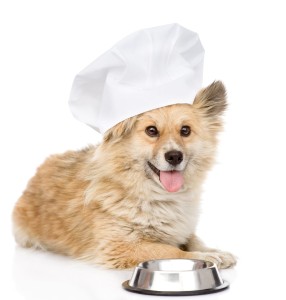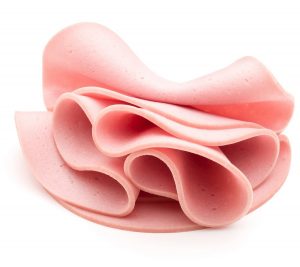 For as many health fads and trends that are out there for humans, there seem to be just as many cropping up for our four-legged friends. Just walking into a pet store to buy a simple bag of kibble is no longer an option, as we pet owners are bombarded with such options as grain-free, freezer sections chock-full of raw food, special blends with “life-protection bits,” packages with wolves on them (the doggy version of Paleo, I assume) and more. Another popular trend is homemade dog food—which, out of all the options out there, seems to me to be the most economical and to make the most sense. At least when you’re making Fido’s food yourself, you know exactly what he’s getting. So, if your New Year’s Resolution list includes feeding Fido healthier fare, here are a few things to consider when it comes to homemade canine cuisine.
For as many health fads and trends that are out there for humans, there seem to be just as many cropping up for our four-legged friends. Just walking into a pet store to buy a simple bag of kibble is no longer an option, as we pet owners are bombarded with such options as grain-free, freezer sections chock-full of raw food, special blends with “life-protection bits,” packages with wolves on them (the doggy version of Paleo, I assume) and more. Another popular trend is homemade dog food—which, out of all the options out there, seems to me to be the most economical and to make the most sense. At least when you’re making Fido’s food yourself, you know exactly what he’s getting. So, if your New Year’s Resolution list includes feeding Fido healthier fare, here are a few things to consider when it comes to homemade canine cuisine.
When considering homemade dog food, the most important concern is providing your pooch with a complete, balanced diet. This is also the leading challenge when creating your recipe. Regardless of where you find your recipe—be it a book, the internet or your veterinarian–ensuring that your furry friend is getting every essential vitamin and mineral can be tough. Like humans, dogs and cats don’t need specific foods or ingredients—your dog doesn’t need blueberries. Nor is fish an essential source of protein for your cat. Like us, animals need nutrients, not specific foods.
Commercial dog and cat food brands go to great lengths to ensure that their pet food is specially formulated to provide their customers with the adequate nutrition. Owners making their own dog food must make sure they are providing their pet with a protein source, a carbohydrate source, sufficient vitamins and minerals and some fat, as animals—both dogs and cats—do require a small amount of fat.
Pet owners can combine protein and carbohydrates in various combinations, including lamb and rice, beef and potatoes, or chicken and pasta. No Atkins diets for your pets—for dogs and cats, carbohydrates are an inexpensive source of energy and provide a nice dose of both amino and fatty acids, so don’t cut out this crucial element unless your pet has a grain allergy. In this case, talk to your veterinarian or a veterinary nutritionist about carbohydrate substitutes.
In addition to your protein and carbohydrate, a variety of fruits and vegetables is also a good addition to your recipe. Though, be careful are there are certain foods to avoid feeding dogs as they are toxic.
Foods to avoid: Onions, garlic, raisins, grapes, macadamia nuts, chocolate, and raw meat, which exposes dogs to risks, such as salmonella and E. coli. All meat should be cooked.
So long as you keep these guidelines and cautions in mind, making your dog or cat food at home is actually an inexpensive, easy and healthy way to feed your beloved family pet. But with any drastic food change, make the transition gradually and keep an eye on them to make sure they’re adjusting well. Otherwise, enjoy knowing you’re spoiling your pet in all the right ways and soak up all that meat and potato-induced love that’s sure to follow!


















“…making your dog or cat food at home is actually an inexpensive, easy and healthy way to feed your beloved family pet.”
I agree completely! There are healthier alternatives to the commercial products available today, and we need to spread the word!